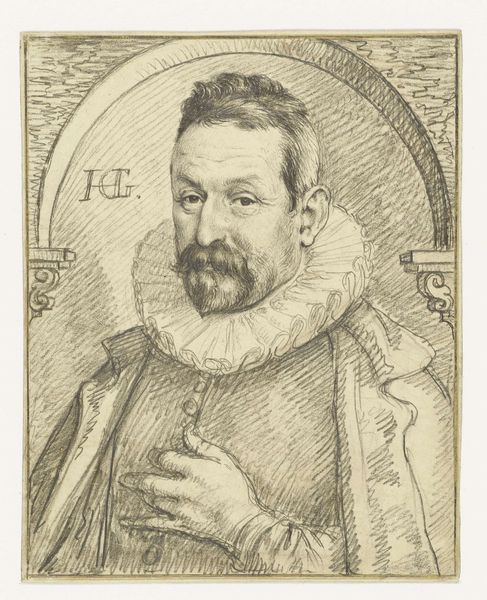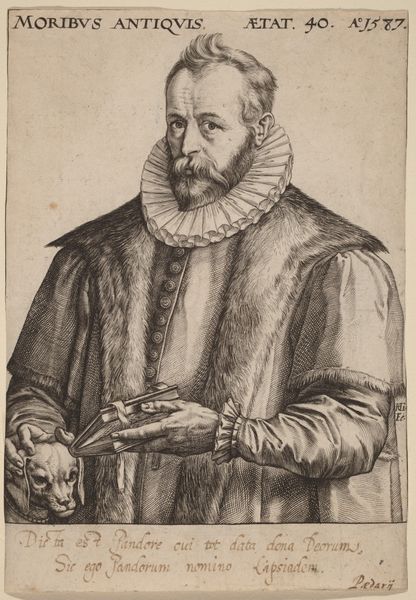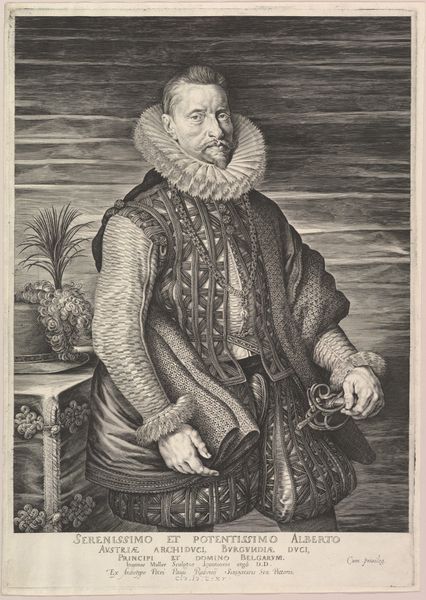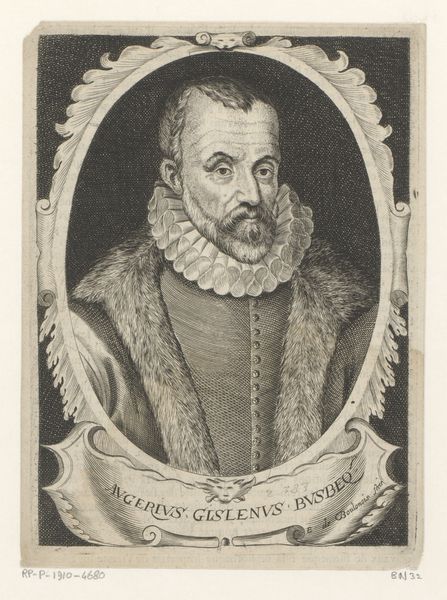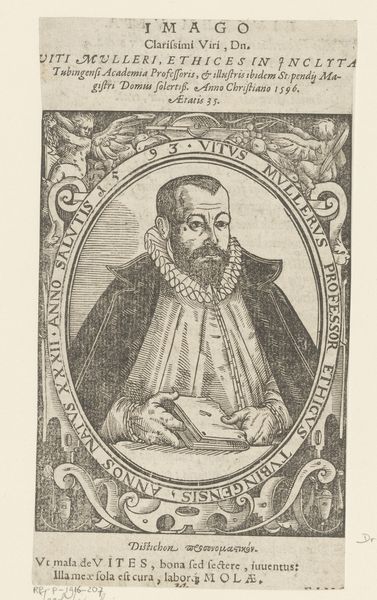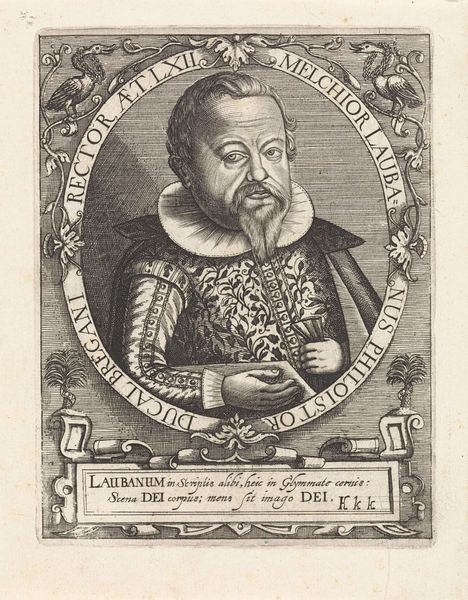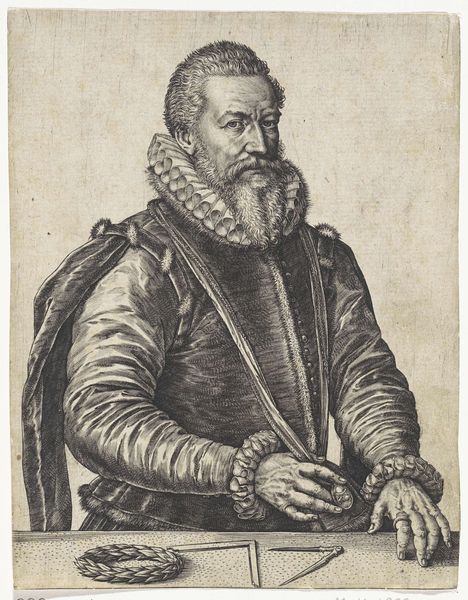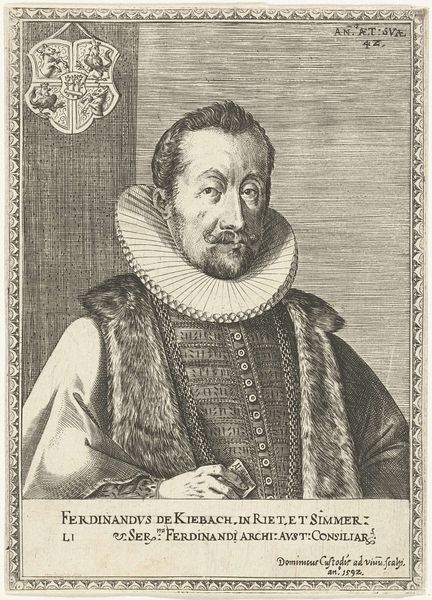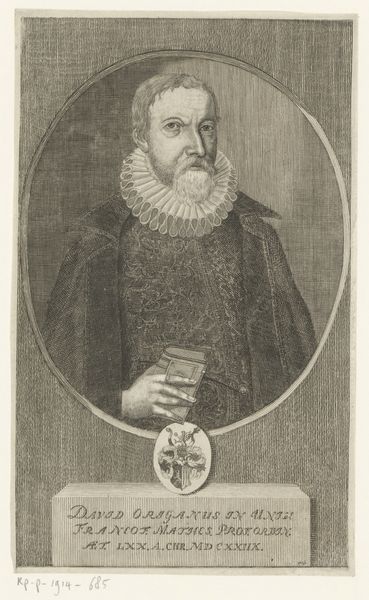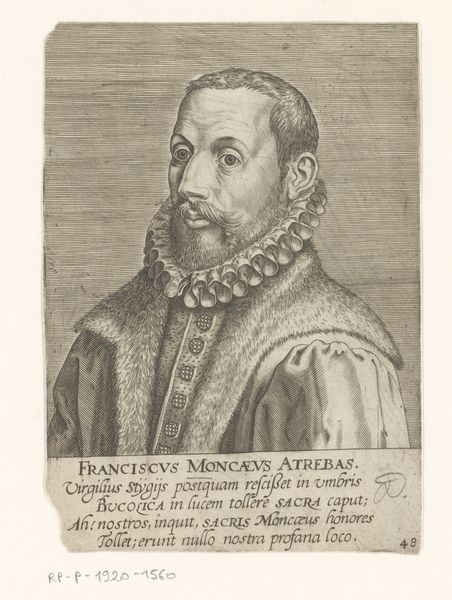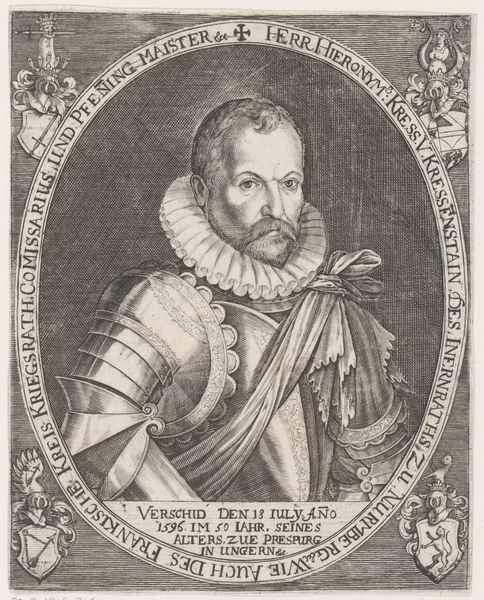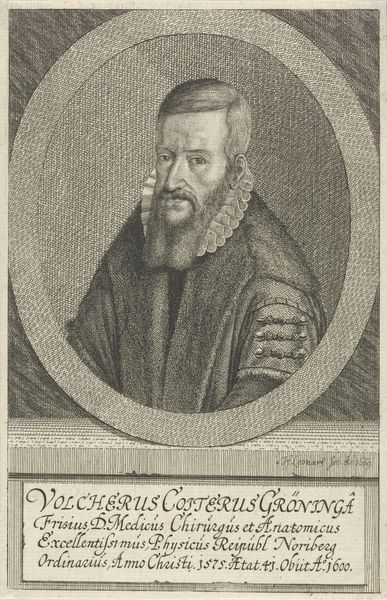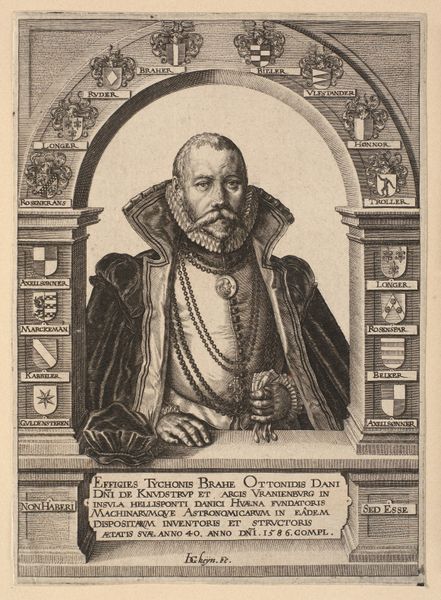
print, engraving
#
portrait
#
baroque
# print
#
old engraving style
#
form
#
line
#
northern-renaissance
#
engraving
Dimensions: overall: 15.6 x 11 cm (6 1/8 x 4 5/16 in.)
Copyright: National Gallery of Art: CC0 1.0
Curator: Standing before us, we have Hendrick Goltzius's "Jan Nicquet," an engraving created in 1595. What strikes you immediately about this portrait? Editor: The intricate lines, definitely. It feels incredibly formal and serious, doesn't it? Almost imposing in its detail. The ruff collar looks a bit tight! Curator: That formality speaks to the function of portraiture at the time. Consider Jan Nicquet’s pose. One hand open and the other clasped--an offering but also a restrained dignity. Editor: Yes, he wants to project power, but within acceptable social bounds, I imagine. How does this fit into the art world then? Was printmaking how ordinary people would view important members of the society? Curator: Absolutely. Printmaking allowed for wider distribution of imagery, shaping public perception of Nicquet and, more broadly, ideals of status and civic responsibility. Goltzius masterfully uses line and form to convey Nicquet’s importance. Also, his coat of arms on the right side conveys Jan Nicquet’s influence. The viewer also has an inscription both in Latin and the local language on the bottom which could give even the less wealthy person the idea that the sitter here has lived up to his father’s reputation. Editor: And there's a fascinating tension here. A printed image, made for distribution, but depicting a man clearly keen to broadcast his uniqueness and familial accomplishments. This is what he thought others should emulate, isn’t it? Curator: Precisely. Goltzius was not just depicting an individual; he was shaping and codifying the visual language of authority for the era. Editor: It's striking how an artwork designed to convey status reveals the societal dynamics of its time. Curator: And how potent visual symbols are in that project—they shape our perceptions even centuries later.
Comments
No comments
Be the first to comment and join the conversation on the ultimate creative platform.
